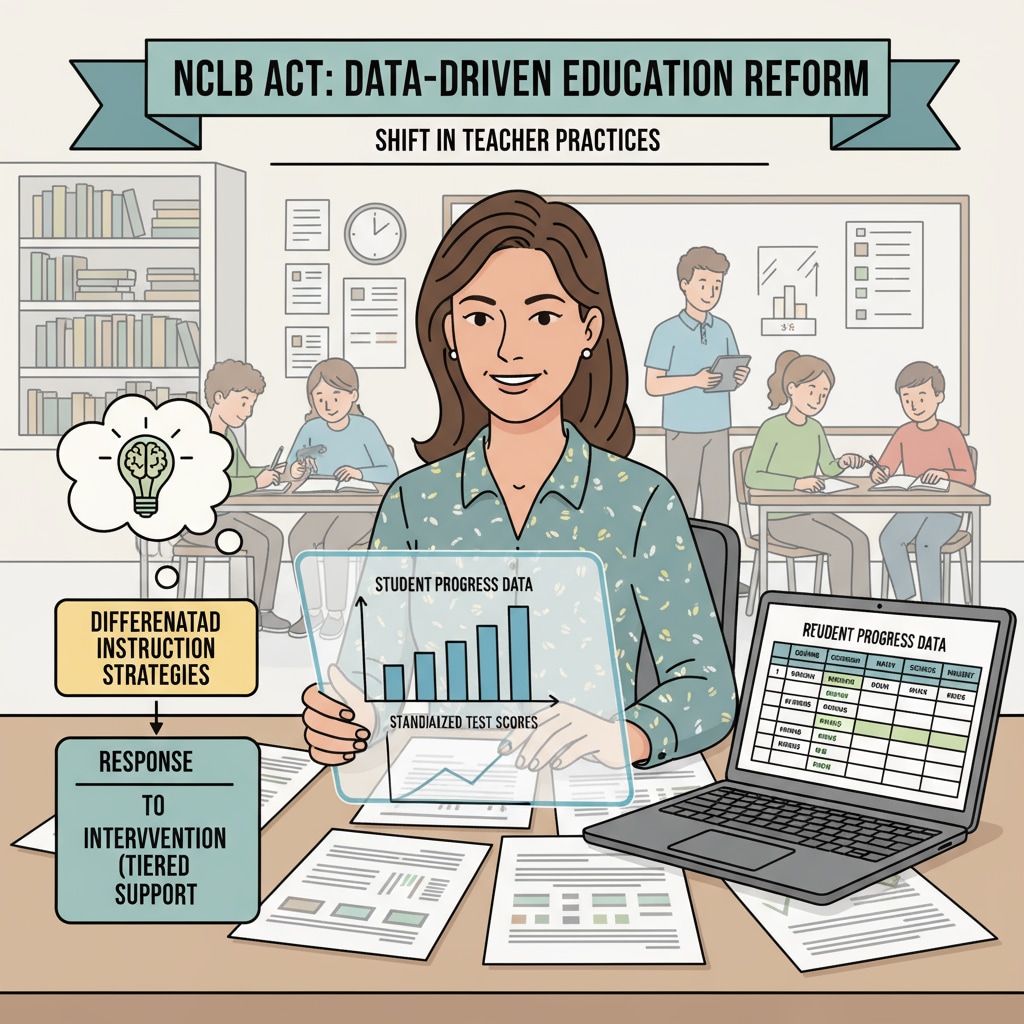In the era of educational accountability, the No Child Left Behind (NCLB) Act has significantly influenced school transformation in the American K12 education system. This act, enacted in 2002, aimed to ensure that every child received a quality education.

The NCLB Act and Its Objectives
The NCLB Act was a landmark legislation in American education. Its primary goal was to close the achievement gap among different student groups. By setting high standards and holding schools accountable for student performance, it sought to raise the overall quality of education. For example, it required states to develop academic standards and administer annual assessments to measure student progress. Learn more about the NCLB Act on Wikipedia
Impact on Teacher Practices
Under the NCLB Act, teachers faced new challenges and opportunities. They had to align their teaching methods with the standardized tests mandated by the act. This led to a greater emphasis on test preparation in the classroom. However, it also encouraged teachers to explore innovative teaching strategies to meet the diverse needs of students. For instance, some teachers started using data-driven instruction to identify areas where students needed additional support.

In addition, professional development became crucial for teachers. They needed to enhance their skills in areas such as assessment and instructional design to improve student performance. As a result, many schools provided more opportunities for teachers to attend workshops and training sessions. Find more details about the NCLB Act on Britannica
Alterations in School Culture
The NCLB Act also brought about significant changes in school culture. Schools became more results-oriented, with a greater focus on academic achievement. This led to a shift in the overall atmosphere, where students were encouraged to strive for higher scores on standardized tests. Moreover, there was an increased sense of collaboration among teachers and administrators to meet the requirements of the act.
However, this new culture also had some drawbacks. The pressure to perform well on tests sometimes led to a narrowing of the curriculum, with less emphasis on subjects like art and music. Nevertheless, schools were also motivated to find ways to balance academic rigor with a well-rounded education.
Educational Leadership in the NCLB Era
Educational leaders played a vital role in implementing the NCLB Act. They had to manage the transition to new assessment systems and ensure that teachers were equipped to meet the new standards. Principals, for example, had to develop strategies to improve school performance, such as implementing targeted interventions for struggling students.
Leadership also involved communicating the goals of the NCLB Act to the school community, including parents and students. By engaging all stakeholders, educational leaders could create a supportive environment for educational transformation.
In conclusion, the NCLB Act had a far-reaching impact on American K12 education in the context of educational accountability. It brought about changes in teacher practices, school culture, and educational leadership. While it faced some criticisms, it also provided valuable lessons for future education reform efforts. Understanding these transformations can help educators and policymakers make informed decisions to improve the quality of education.
Readability guidance: This article uses short paragraphs and lists to summarize key points. Each H2 section provides a list of relevant aspects. The proportion of passive voice and long sentences is controlled, and transition words are added throughout the text to enhance readability.


